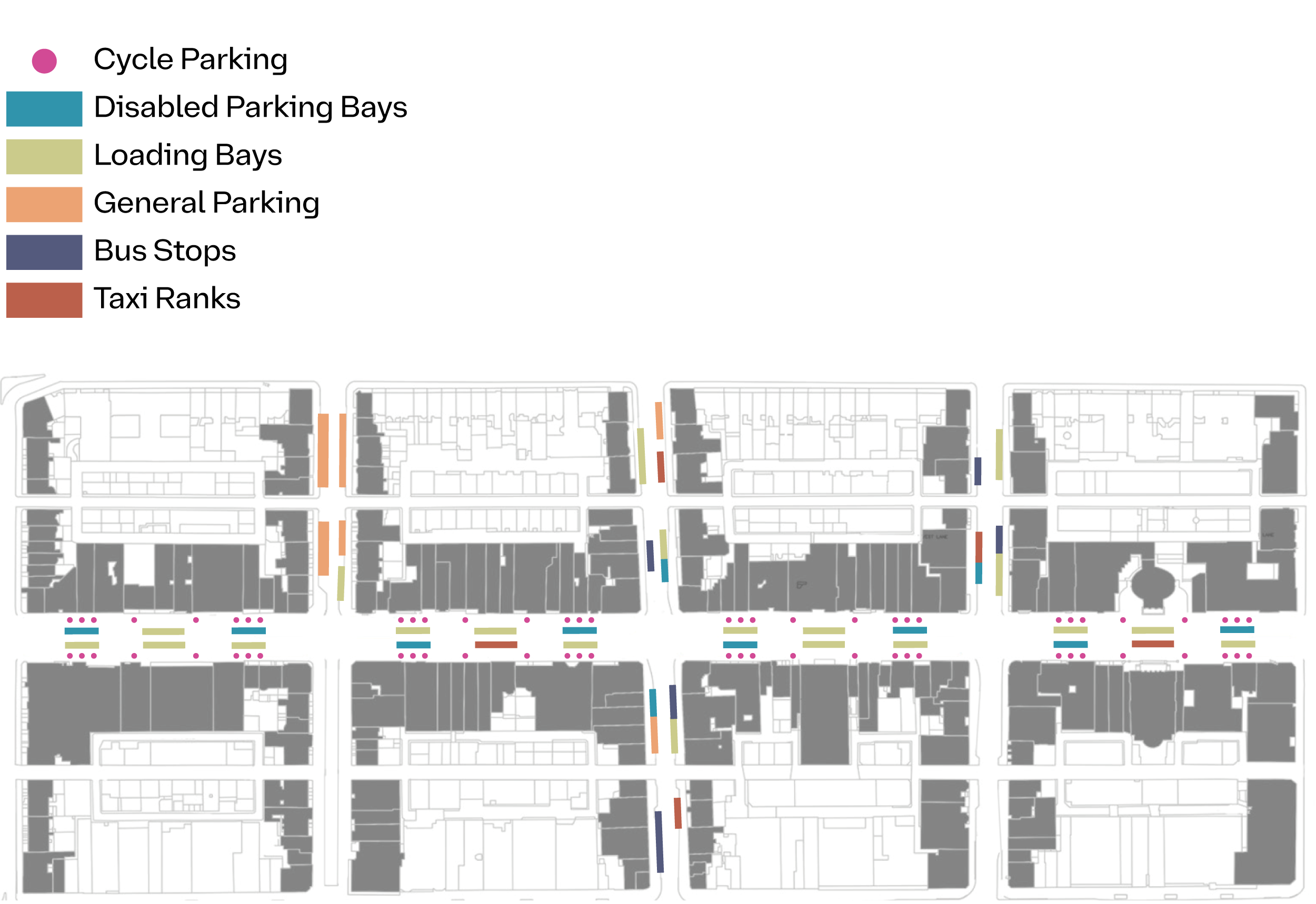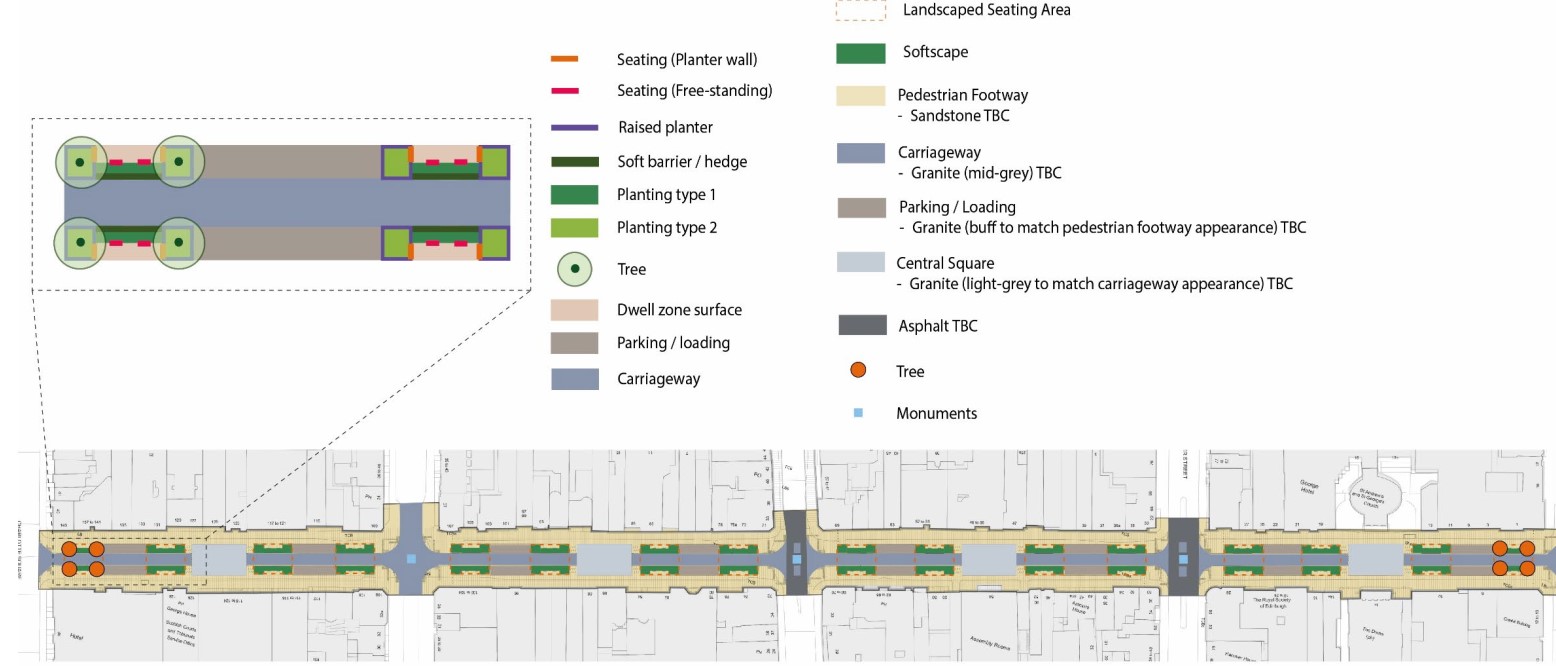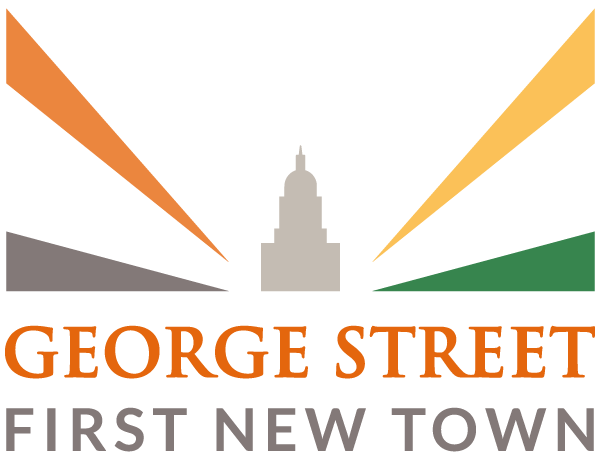How the street will work
The Operation Plan proposes how the George Street and First New Town area will work once we have completed construction.
The plan
- sets out the access plan for all vehicles and the timings of vehicle restrictions
- will improve accessibility, encourage active travel, prioritise essential public transport and manage traffic access to the area
- form the basis of securing the road statutory orders which are needed before we can proceed with construction.
We have engaged extensively with stakeholder and community groups, residents and businesses to understand the needs of those living and working there.
Operational changes are proposed on Hanover Street, Frederick Street and North Castle Street. The location of bus stops, parking, loading and disabled bays have been agreed through engagement with businesses and residents.
In 2024 RIBA Stage 3, developed designs were prepared for the cross streets of Hanover Street, Frederick Street and North Castle Street. We held engagement events and provided an online consultation between November 2023 and February 2024. This work is important as it confirmed the differing relationships between George Street and each of the cross streets.
Alongside the George Street construction, smaller operational changes are proposed on the cross streets to support the George Street proposals, such as changing some pay and display parking bays to blue badge and loading bays.
Read the committee reports and operational plan which were agreed at Transport and Environment Committee in May 2024 and June 2023.
Diagram: operation plan key elements shown individually. Locations are interim on side streets.

SUMMARY OF THE OPERATION PLAN
The final plan was approved by the Transport and Environment Committee on 15 June 2023.
Read the full committee report and operation plan
BUSES
Remove bus services from George Street, retaining services running across George Street from Frederick Street, Hanover Street and St David Street.
Reposition bus stops to minimise onward walking distances to city centre destinations.
Route diversions are being considered as part of the Council’s City Centre Bus Network Review.
GENERAL TRAFFIC, DELIVERIES AND SERVICING
Remove general traffic access to George Street.
Essential vehicle access, such as daily deliveries and servicing, will be managed with a daily access window of 7pm to 10.30am Monday to Saturday and 7pm to 12.30 noon Sunday.
Loading on George Street will be consolidated to dedicated loading bays and central spaces, equally distributed along the north and south sides of the street.
A one-way system for vehicle traffic west to east and contraflow system for cyclists allowing travel in both directions.
Each block is proposed as left hand turn only for vehicles to minimise traffic numbers and allow pedestrian priority at junction crossing points.
TAXIS, PRIVATE HIRE CARS, COACHES AND BLUE BADGE HOLDERS
24/7 access for blue badge holders in private vehicles and blue badge/taxicard holders using licenced taxi and licensed private hire cars through a booking system.
Permitted access for all taxi and private hire car users between the hours of 7pm and 6am, Monday to Sunday, to support nighttime safety and the local economy.
Access for a maximum of one coach per block at any one time to serve hotels and venues on George Street through a permit system.
The above access arrangements to be tested under an 18-month Experimental Traffic Regulation Order (ETRO).
MANAGING ACCESS
Vehicle access to George Street will be managed outside of the daily access window times using automated bollards.
Access for essential and exempt vehicles during the pedestrian and cycle zone windows will be managed through a booking or permit system. This includes blue badge, taxicard holders, coaches, emergency services, events (weddings, funerals, festivals). postal services, statutory works such as utilities, emergency trade repairs, Council and Scottish government vehicles.
LANDSCAPING
Dwell zones are proposed with incorporated raised planters and seating. Eight trees are proposed - four at the Charlotte Square end, four at the St Andrew Square end - and low-level planting within a Sustainable Urban Drainage System linking to the existing drainage system.
A partnership between the Council, Edinburgh World Heritage, Royal Botanic Garden Edinburgh and consultants AtkinsRealis will ensure a high-quality, resilient planting palette is introduced to George Street that respects the historic environment whilst providing continuing functional benefits of urban greening.
Planting palettes will be tested and monitored at the Royal Botanic Garden Edinburgh before construction to ensure their suitability and success whilst complementing the UNESCO World Heritage Site in terms of line, unity, scale, pattern, proportion and form
Delivery of the full design aligns with Council strategies and plans including
- 2030 Climate Strategy
- Vision for Water Management in the City of Edinburgh
- Edinburgh Nature Network
- Climate Ready Edinburgh Plan 2024-2030.
These documents set out the importance of incorporating green and blue infrastructure and supporting Edinburgh's strategic goals for air quality, climate resilience and sustainability.


Monitoring and evaluation
Given the significant changes to how George Street and surrounding streets will operate, we will use comprehensive monitoring and evaluation to assess the impact of the operational changes over 18 months.
We will then assess if we need to make any adjustments to support both the design and operation of the street.
